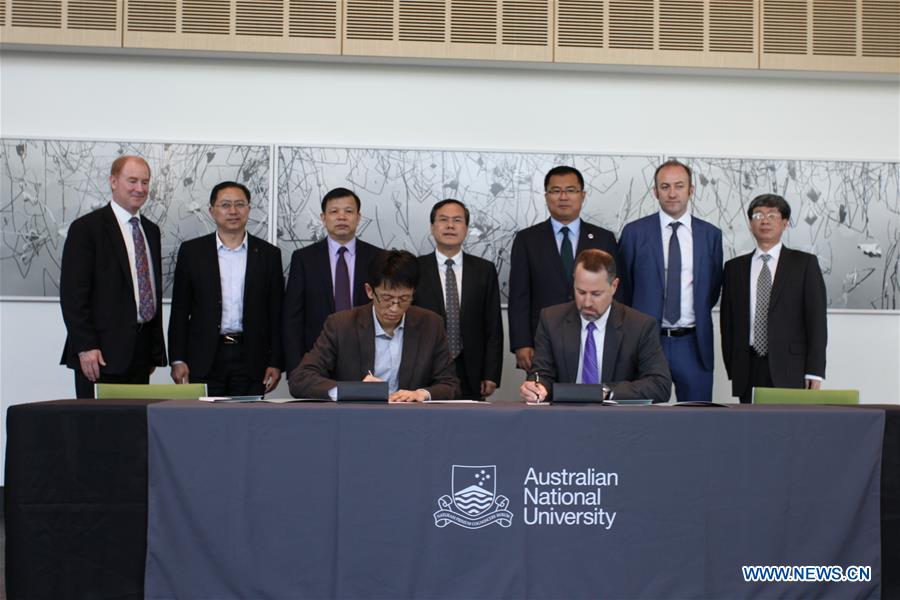http://news.xinhuanet.com/english/2017-04/12/c_136202913.htm?from=groupmessage

Representatives of the Australian National University (ANU) and the University of South China (USC) sign a Memorandum of Understanding (MoU) on research collaboration on fusion energy technology on ANU campus in Canberra, Australia, April 12, 2017. As the first project under the MoU, the ANU has agreed to provide the USC with its plasma Stellarator device, the first in China when the device is shipped to China later this year. (Xinhua/Xu Haijing)
CANBERRA, April 12 (Xinhua) -- The Australian National University (ANU) and the University of South China (USC) have signed a Memorandum of Understanding (MoU) on research collaboration on fusion energy technology.
As the first project under the MoU, the ANU has agreed to provide the USC with its plasma Stellarator device, the first in China when the device is shipped to China later this year.
Dr Cormac Corr, Director of the Australian Plasma Fusion Research Facility at ANU, said the device, 4 square meters by 5 meters, will be shipped to Hengyang, in southern China's Hunan Province, where the USC is located, hopefully by the end of this year.
He said that the MoU was an important step towards developing a future energy source for the world.
"We're working towards making fusion a viable baseload power source by 2050, and Australia working closer with China on this technology will help to make this a reality," Corr said.
Professor Wang Hanqing, Chairman of the Council of USC, said the two universities will develop collaborative programs including the exchange of visiting students and researchers, joint research project declaration, etc, based on the stellarator provided.
Nuclear fusion, which powers our sun and all stars in the Universe, is regarded as as the alternative way to provide sustainable, zero-emission and relatively cheap power to grids.
Corr said that after years of funding support from the Australian government, ANU has developed strong technical expertise in stellarator, one of the two fusion devices that are most likely to be viable power sources.
China, the European Union, India, Korea, Russia, Japan and the United States are jointly funding the construction of the $30 billion ITER nuclear fusion demonstration facility in France that will start producing 500 megawatts of power by the late 2020s.